Japan Exports and Imports Grow as Economy Shows Resilience to Tariffs
Japan’s trade numbers are doing something interesting in 2025. In January, exports rose about 7 % from the previous year, while imports climbed roughly 17 %. That shows both outgoing and incoming goods are growing despite rising tariffs and uncertain global trade. Even larger, the economy of Japan expanded by about 1.0 % in the second quarter of 2025.
What’s driving this uptick? It seems Japan is leaning into its strengths like advanced manufacturing and strong regional ties, while also adjusting to tougher trade rules abroad. At the same time, imports are picking up, which suggests domestic demand is recovering and companies are gearing up their supply chains.
In short, Japan’s trading activity signals resilience. Even under tariff pressure, both its exports and its imports are moving upwards. This article digs into how that is happening, what it means for Japan’s economy, and which risks still lie ahead.
Japan’s Current Trade Landscape
Japan’s trade flows picked up in 2025. Export volumes have held up despite new tariffs from major markets. The economy returned to growth in the second quarter of 2025, helped by strong exports. That revision underscored trade’s continued role in propping up output as domestic demand slowly recovers. Major partners remain China, the United States, ASEAN states, and the EU.
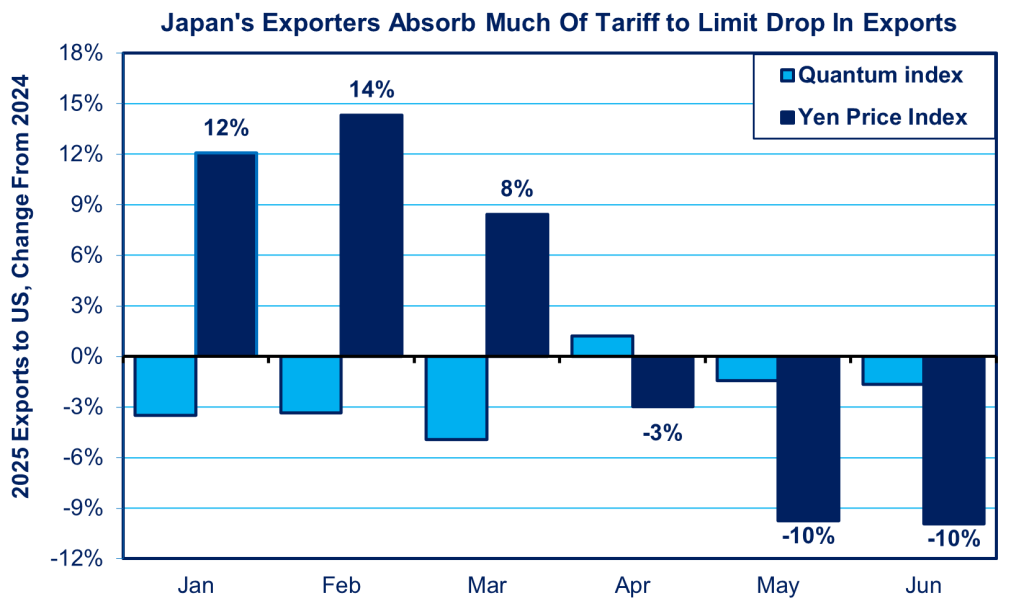
Key export sectors include autos, semiconductors, and precision machinery. On the import side, energy and industrial inputs stand out. These trends show that Japan’s trade is broad-based. They also show trade remains a central pillar of growth.
Impact of Global Tariffs and Trade Policies
New tariffs have reshaped market routes. The United States implemented broad tariffs on many Japanese goods under a September 2025 agreement. That move raised costs for exporters to the U.S. Automakers face particularly heavy burdens. At the same time, some Asian markets have absorbed more shipments from Japan.
Firms are rerouting output and shifting production footprints. Trade diplomacy has become more active. Japanese policymakers press for stable market access and for rules that limit damage from tariff shifts. These policy moves have not erased pain. But they have given companies more time to adapt.

Drivers of the Japan Exports Growth
Technology and high-value manufacturing keep Japan competitive. Firms export semiconductors, industrial robots, and advanced vehicle components. Demand for electric-vehicle parts and batteries has added momentum. Some exporters benefit from a weaker yen at times, which makes goods cheaper overseas. Trading pacts such as CPTPP and RCEP also lower barriers within Asia.
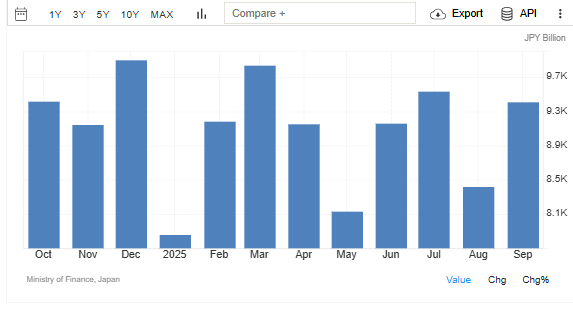
Companies have begun using supply hubs in ASEAN and the UK to avoid tariffs and to stay close to customers. Large exporters have adjusted production and logistics quickly. Analysts using an AI stock research analysis tool also flagged this shift toward regional production hubs as a core reason exports stayed robust through 2025.
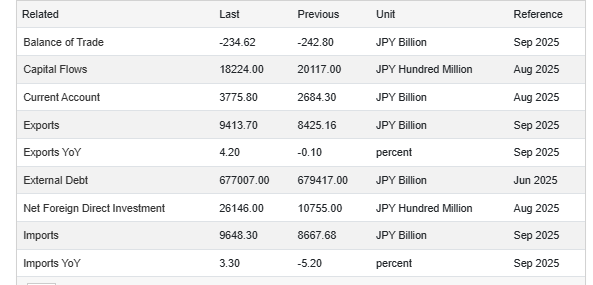
Rise in Imports and Domestic Economic Recovery
Imports rose sharply in parts of 2025. Energy imports, especially LNG, climbed as power demand rose. Japan returned to longer-term LNG deals to secure supply. Industrial imports also increased as firms restocked inventories and upgraded production lines. Consumer imports rose too, reflecting steadier household spending.
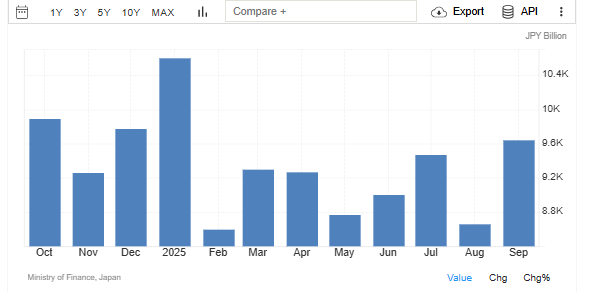
Together, these moves point to a recovery that is not only export-led. Domestic demand also supports trade. In short, imports grew because factories needed inputs and households demanded more goods.
Japan’s Economic Resilience and Policy Support
The government and central bank have played an active part in cushioning shocks. Tokyo has stepped up trade promotion and supply chain support. The Bank of Japan has moved carefully on rates to balance inflation and growth, while markets debate future hikes. Officials also intervene verbally and, on occasion, in currency markets to limit abrupt yen swings.
Public-private initiatives aim to boost chip production, green tech, and logistics. Those programs help firms remain competitive despite higher tariff costs abroad. The combined policy stance helped Japan avoid a larger export slump in mid-2025.
Case Study: The Auto Sector
Automakers illustrate both strain and adaptation. Tariffs hit profit forecasts and margins. Toyota warned of a large tariff hit and cut profit guidance in 2025. At the same time, carmakers shifted some production overseas. Relocating models or adding lines abroad reduces exposure to tariffs. Such moves protect sales and shorten delivery times to key markets. The auto sector shows how firms convert a policy shock into strategic change.
Challenges and Risks Ahead
Risks remain sizable. Geopolitical tensions, chiefly between the U.S. and China, could widen tariff actions or prompt new supply restrictions. A weaker yen helps exporters but raises import bills for fuel and raw materials. That combination can squeeze household budgets.
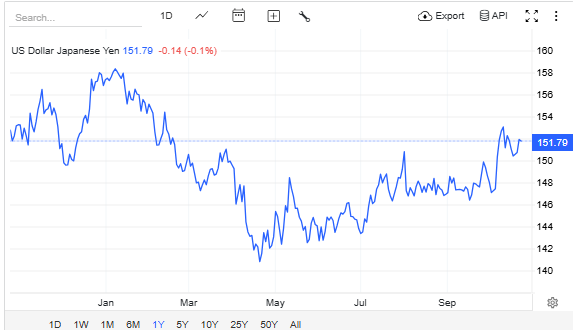
Natural disasters and energy shocks also pose threats to supply chains because Japan sits in a seismically active region. Finally, global demand could slow if advanced economies cool. Policymakers cannot rely on a single lever. They must balance currency stability, inflation control, and trade diplomacy.
Future Outlook of Japan Exports
Looking ahead to 2026-2027, the picture is mixed but cautiously optimistic. Exports should benefit from technology demand and regional free-trade frameworks. Imports will likely stay elevated as industry upgrades and energy needs continue. Firms that diversify markets and localize production will fare best. Policy steps that promote green energy, chip capacity, and logistics resilience will matter most.
If tariffs stabilize and global demand holds, Japan can convert its current momentum into steady growth. If trade tensions rise, expect further production shifts and new trade routes to emerge. The final shape of growth will depend on policy choices and how quickly companies adapt to the new trade map.
Wrap Up
Japan’s trade story in 2025 is one of quiet strength. Despite new tariffs and global uncertainty, both exports and imports have grown, proving the economy’s flexibility. Strong tech industries, smart trade deals, and quick policy support have kept momentum alive.
Rising imports show renewed domestic confidence, while resilient Japan exports highlight global competitiveness. The next challenge is turning this resilience into lasting growth through innovation and regional cooperation. Now, Japan stands out for one clear reason adapts faster than most.
Frequently Asked Questions (FAQs)
Japan’s exports and imports rose in 2025 because of higher global demand, stable yen rates, and a stronger domestic recovery after COVID-19. Industries and consumers both increased activity.
New tariffs since mid-2025 raised export costs for some goods, but Japan’s trade deals and regional links helped reduce the overall impact on its economy.
In 2025, Japan’s export growth came mainly from cars, semiconductors, and electronics. These high-tech sectors stayed strong despite global tariffs and supply challenges.
Disclaimer: The content shared by Meyka AI PTY LTD is solely for research and informational purposes. Meyka is not a financial advisory service, and the information provided should not be considered investment or trading advice.






